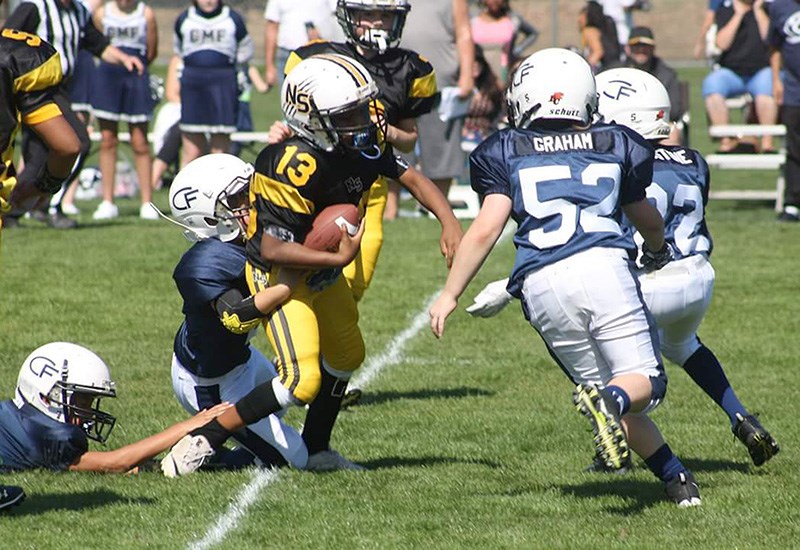The Coquitlam Minor Football Association is celebrating its 40th anniversary. Whether it will still be around another 40 years depends on how it adapts and responds to growing concerns about injury and concussions in the sport.
Jeff Cusker has already seen football’s lustre faded by the second-highest concussion rate among youth sports in Canada behind only hockey according to the public health information database compiled by the Canadian government. That perception of risk may be why football doesn’t even rank in the top ten sports for youth participation in Canada according to a study by Toronto’s Solutions Research Group.
When Cusker was playing youth football for the Vancouver Trojans program, he remembers the Coquitlam association being chock-a-block with multiple teams in every age division. Now the CMFA is down to four teams playing in four divisions, a number that’s held steady for several seasons.
Growth is happening in the association’s spring flag football program, though, which now has more than 200 athletes.
Cusker, who’s been coaching the game for 12 years, said that shift to the non-contact, five-players-a-side version of football is directly attributable to parents’ concerns about concussions.
“We’re moving away from contact,” Cusker, a vice-president for the CMFA, said. “One concussion is too many.”
But the growing popularity of flag football raises a red flag for the continued survival of the contact game and creates challenges for coaches and executives trying to keep it alive, especially at higher levels like high school and college.
One response has been education, teaching coaches and players about the risks and signs of concussion while reducing the opportunities for them to happen.
“Football and concussions go hand-in-hand,” Cusker said. “When I was a player, you’d get a ‘ringer’ and you would go out onto the field again.”
That’s not acceptable anymore.
CMFA coaches must take a National Coaching Certification Program (NCCP) with specific, standardized modules for football that include safe contact workshops with instruction on how to position the body properly to block and make tackles.
Although even that is a work in progress as a recent edict by Football Canada for players to make hits by leading with their chest to minimize the risk for neck and head injuries was found to be impractical in actual game play.
“The concept was great, but it doesn’t really work with the game,” Cusker said. “You can only make that kind of tackle about 5% of the time.”
Instead, players are taught to lead with their shoulders and contact drills in practice are limited to no more than 90 minutes per week. And most of that is against inanimate bags and sleds rather than each other, Cusker said.
Parents also need to be kept in the loop, especially as their kids make the transition from flag to tackle football.
Cusker, who’s 10-year-old son also plays, said he has a meeting with parents at the beginning of the season to outline the type of training their kids will get and address any concerns they may have.
“We need to promote how we’ve evolved,” Cusker said.
Ironically, football’s diminished status in the landscape of youth sports may actually help the game as families seek opportunities away from the more popular activities like hockey and soccer.
“They feel somewhat unique playing football,” Cusker said. “It gives kids a sense of pride, leadership and individuality because of the uniqueness of the sport.”
• As part of its 40th anniversary celebrations, CMFA will be hosting a special pancake breakfast at Mackin Park on Saturday, from 9:30 to 11:30 a.m. Cost is $5 for two pancakes with strawberries and whipped cream, two sausages and coffee, tea or juice.



